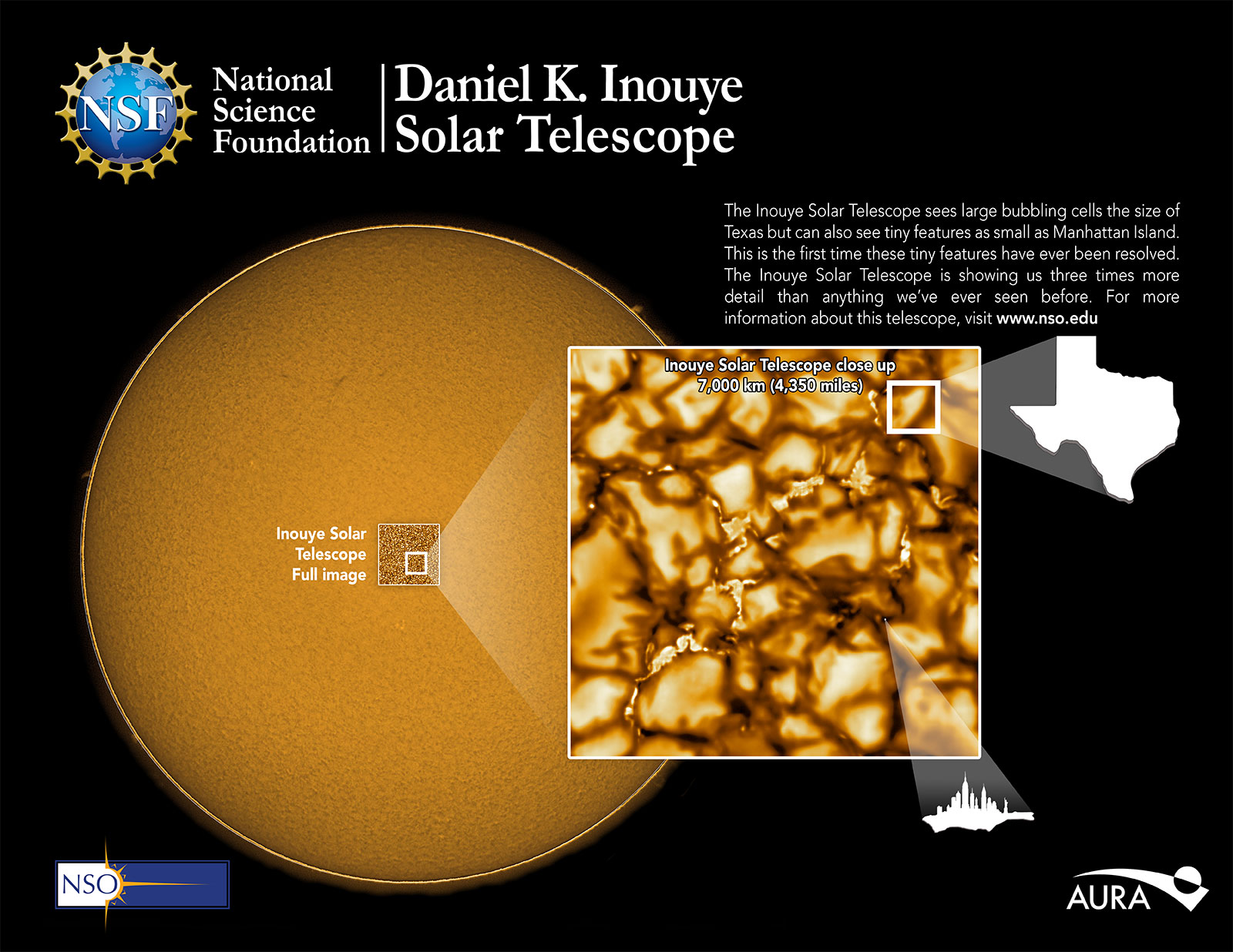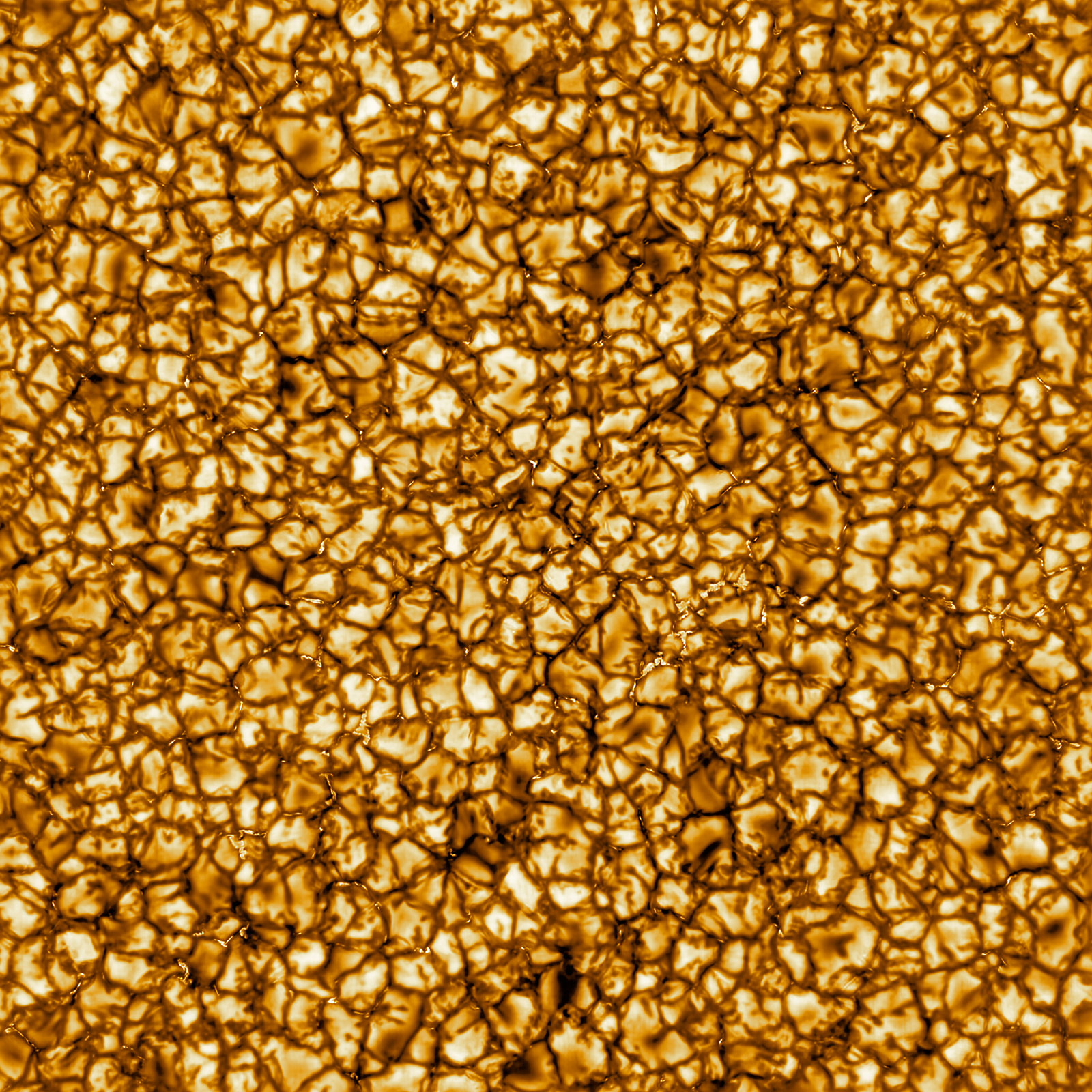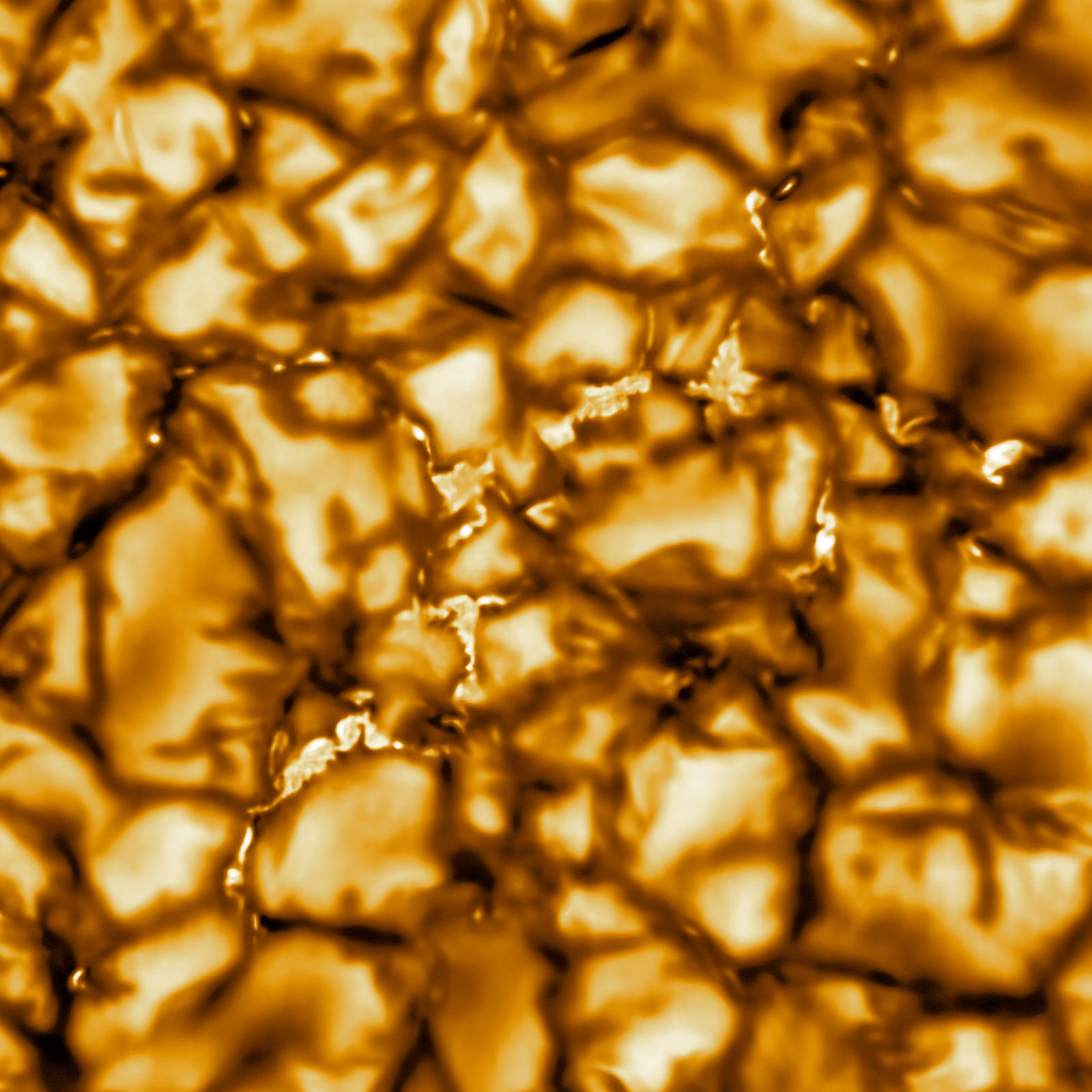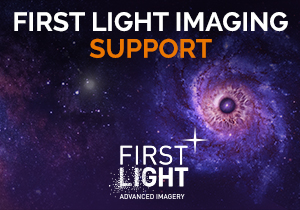26 Feb
Andor Technology Cameras Capture the Most Detailed Images of the Sun
The highest resolution Solar images have been captured by Andor Balor sCMOS cameras at the largest solar telescope in the world.
Newly released data from the National Science Foundation (NSF) funded 4-meter Inouye Solar Telescope at Haleakalā in Hawai’i show the surface of the Sun in unprecedented detail, hailing the beginning of a new era of high resolution solar physics and a giant leap forward in understanding the most precious astronomical body to humankind.
These new images and video show how the areas known as ‘quiet Sun’ are much more dynamic than previously thought. The images clearly show large convective cell structures, which can be double the size of France, from the ‘boiling’ 6000-degree plasma which denote the solar surface. These structures represent the top of violent motions which push the light and heat from the nuclear core out to the solar atmosphere. Most importantly, fantastic detail can be observed between these cells, showcasing the turbulent motions and magnetic concentrations being buffeted by these dynamics.
The Daniel K. Inouye Solar Telescope has produced the highest resolution observations of the Sun's surface ever taken. In this movie, taken at a wavelength of 705nm over a period of 10 minutes, we can see features as small as 30km (18 miles) in size for the first time ever. The movie shows the turbulent, “boiling” gas that covers the entire sun. The cell-like structures – each about the size of Texas – are the signature of violent motions that transport heat from the inside of the sun to its surface. Hot solar material (plasma) rises in the bright centers of “cells,” cools off and then sinks below the surface in dark lanes in a process known as convection. In these dark lanes we can also see the tiny, bright markers of magnetic fields. Never before seen to this clarity, these bright specks are thought to channel energy up into the outer layers of the solar atmosphere called the corona. These bright spots may be at the core of why the solar corona is more than a million degrees! This movie covers an area 19,000 x 10,700 km (11,800 x 6,700 miles or 27 x 15 arcseconds). Video credit: NSO/AURA/NSF
The images were taken with the newly released 16-megapixel Andor Balor sCMOS camera, which was developed as part of the telescope project which involves a research consortium with key driving from Queen’s University Belfast. The Andor Balor cameras provide enough dynamic range to capture both dark sunspots and bright solar flares in one image. Furthermore, the camera’s global shutter readout functionality allows pixel operation whereby each pixel is exposed identically relative to an external GPS timestamp, enabling the study of small-scale, high velocity transients with pixel perfect accuracy. With Andor cameras installed on 4 instruments at the telescope, it allows for high resolution imaging, together with spectral and polarimetric information to be gathered from a variety of wavelengths and solar atmospheric heights simultaneously.
Dr. Aaron Reid, solar physics researcher and lead tester for the Balor cameras at the telescope states “The Balor cameras delivered to the Inouye Solar Telescope provide a unique solution to a complex problem. The 4-m telescope required a very large field-of-view to maximise the physical resolution, while also having a fast-enough readout to essentially ‘freeze’ the atmospheric seeing on Earth to provide us with these amazing new images. This will finally allow solar physicists to understand the magnetic dynamics which drive space weather, which can wreak havoc to us on Earth, and ultimately help in predicting future events.”
Space Weather, namely coronal mass ejections from the Sun, can cause trillions of dollars of damage to satellites, GPS and electricity networks. In 2003, flights were grounded and rerouted due to a solar storm, while in 1989, a strong solar storm caused a blackout along the entire province of Quebec, halting the Toronto Stock Exchange. The ability to prepare in advance of a solar storm is paramount in safeguarding our technology and infrastructure.
Professor Mihalis Mathioudakis from Queen’s University Belfast, who led the UK consortium, said: “The images produced by the Inouye Solar Telescope opens new horizons in solar physics. Its imaging capability allows us to study the physical processes at work in the Sun’s atmosphere at unprecedented levels of detail. We worked hard over the past few years with Belfast-based Andor Technology to develop the cameras that equip the Inouye Solar Telescope and it is highly rewarding to now see this fascinating imaging.”







